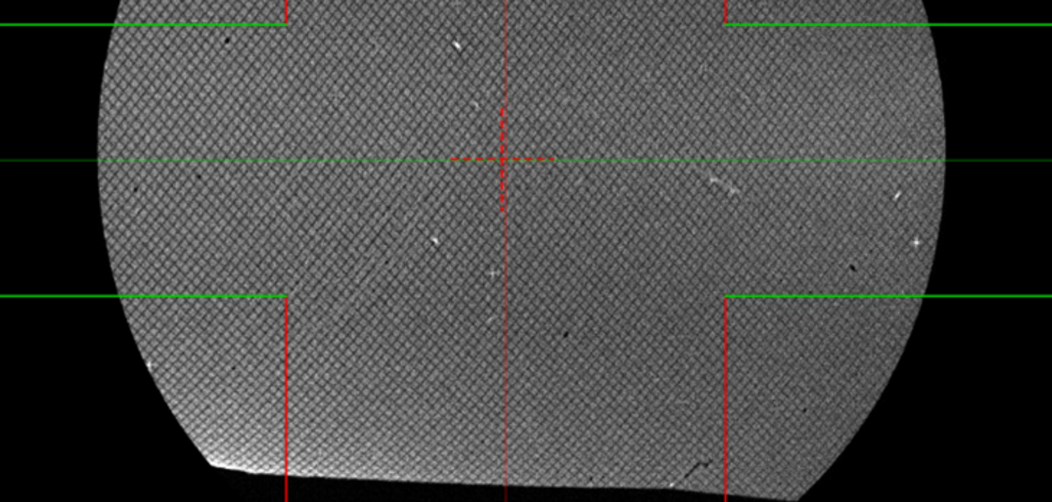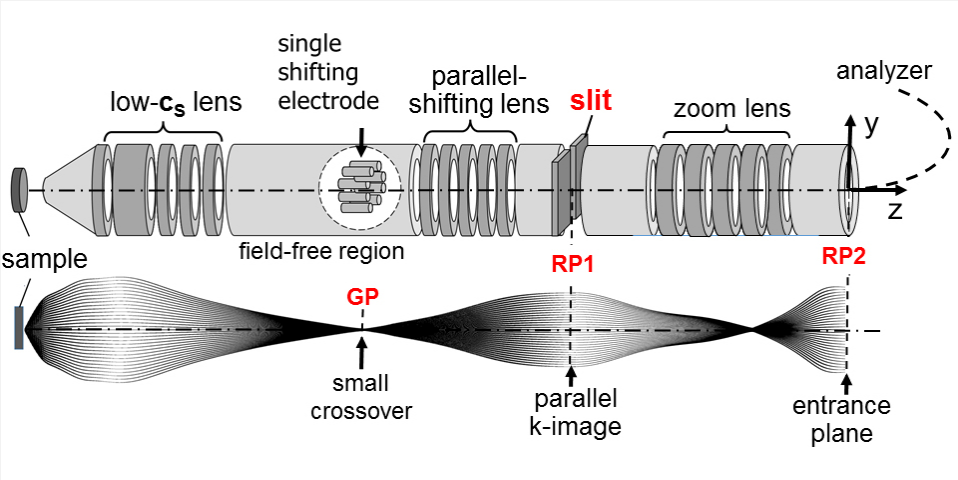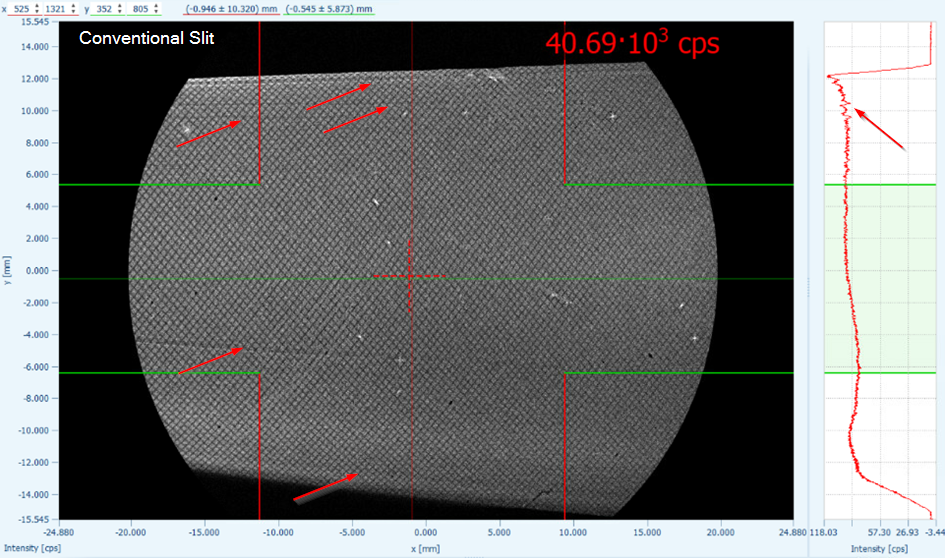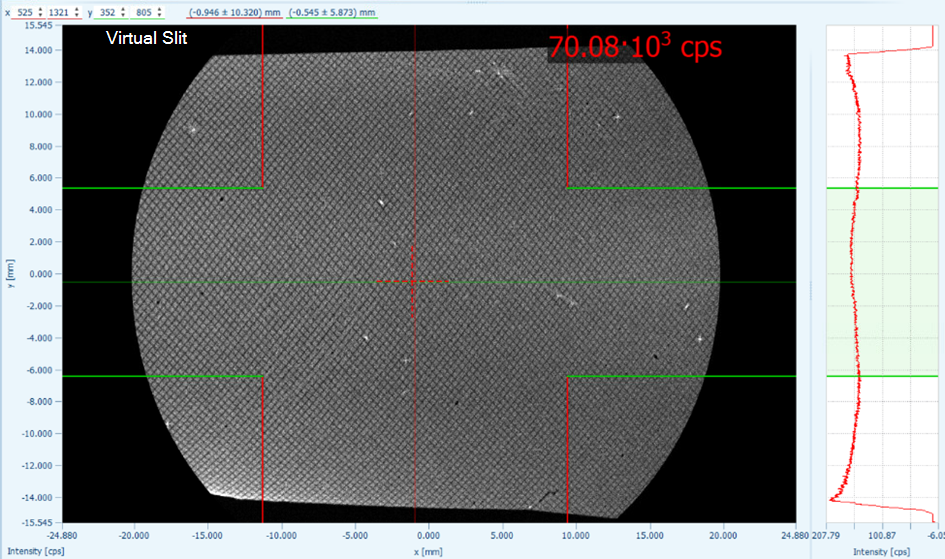As promised in our last blog post, in which we have demonstrated the capability of the new single spot shifting lens, first results from our new ASTRAIOS 190 2D-CMOS is continued with varying focusses on the key features and specifications.
Now we turn our attention to demonstrate the benefits of the completely new and revolutionary entrance slit concept: the virtual entrance slit. Instead of conventionally mounting the different slits in the entrance plane of the concentric hemispheres, the ASTRAIOS has its entrance slits in an electron-optically equivalent plane in the lens, RP1. The advantage is that the kinetic energies of the electrons are significantly higher in the lens than in the entrance plane of the hemisphere, where they are equal to the selected pass energy. The lower the kinetic energy of electrons, the higher is their sensitivity to field inhomogeneities. For every conventional high resolution analyzer it is well known that slit quality and especially its degradation with time, due to particle contamination and coating wear, strongly influences the image quality and thus with time alters the angular and energy resolution. The slit positioning in an electron optical plane located at higher kinetic energies strongly reduces the effects of contaminations of the slit edges, which typically results in darker or brighter horizontal stripes in the detector image.
To prove this in the first ASTRAIOS, both types of slit mechanisms are mounted. This enables us to directly compare measurements using the entrance slit at the entrance of the hemisphere with the virtual entrance slit mechanism. Both slits sizes are 50 µm, which are commonly used for measurements with ultimate energy resolution. The presented data is raw data. The detector image shows a test mesh (19µm wires) on the exit aperture to ensure a constant imaging quality after the hemisphere. When using the conventional slit, horizontal stripes can be seen in the image, which are a result from the impurities or contaminations at the slit edge.
In comparison, the second image utilizes the virtual entrance slit using the same settings as above. Clearly, no horizontal stripes are visible. While the pass energy is set to 3 eV in both cases, the actual kinetic energy of the electrons at the position of the virtual slit is a factor of 7 times higher than the energy at the entrance of the hemisphere. As a consequence, measurements can be taken at much lower pass energies, i.e. better energy resolution, without compromising the imaging quality. This is not only valid right after installation, but also after many years of use of the instrument. Higher reliability and long-term stable specifications allow for higher productivity of the instrument. An additional benefit of this new slit concept is its fully motorized integration within SPECS Prodigy, making experiments even easier.
Stay tuned for the next upcoming news.



